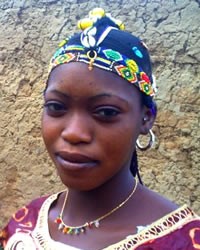The Khassonke ethnicity has been identified historically as the kingdom Khasso which opposed the advancement of the kingdom of Kaarta Bamanan led by Deniba Bo, to the years 1758-1761.
Most live in Mali, though some are in Senegal and Gambia.
Since the introduction of maize and peanuts from America, corn is the primary product to be harvested, followed by millet and peanuts. Peanuts (arachide) are almost always present in the diet of the poor and the rich.
Depending on the area (near or far from the river or the mountains) and the number of family members, each family may or may not have cattle and sheep, and access to gardens or orchards. The lower the number of members, the less probability they will have of owning a garden. The richest are devoted to livestock graze if they have someone to care for them (family or hired). The poor or moderately rich send their young children to seek work after harvest to cover what they lack.
After November pastoralists arrive and some families have agreements with these to corral their cattle in the fields, so that when the period of sowing comes, the ground is properly fertilized. This often happens naturally because there are usually family ties between them.
Socially one can identify in a village the noble families, the founders of the village or older families, the imam, the Marabou and the rich. They have social classes, but in the cities these roles are not necessarily represented.
The religion of the Khassonke is linked with a popular Islam, mixed with animism. This is more common in rural areas. There are points of Christian witness but there is not yet a movement to Christ.
There is a Khassonke New Testament, prepared by the Norwegian Mission and published by the Bible Alliance. Genesis, Ruth and Jonah are in process.
Pray for accuracy in the Bible translation work.
Pray for biblical materials to soon be easily available for the Khassonke people.
Pray for Khassonke family leaders to have the spiritual hunger it takes to embrace Christ no matter what the cost.
Scripture Prayers for the Khasonke in Gambia.
https://en.wikipedia.org/wiki/Khassonk%C3%A9_people
https://prayway.com/unreached/peoplegroups4/1822.html
| Profile Source: Joshua Project |










